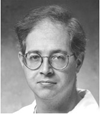December 7, 1941 Pearl
Harbor.... Lots
of casualties. Patient safety routine efforts primarily consist of finger
on the pulse, eyes on the chest, observation of skin color. The recently
released drug, thiopental, is employed. Some of the soldiers die…of
anesthesia (1-3). Anesthesia-related death rate reported at 1 in 450 (2).
September 1979 – September 1981 (WAK residency time). The
operating surgeon calmly notes blood’s dark. WAK’s reaction: BLOOD'S
DARK!!! Dr. Todres says the first 3 things to check for with any
problem in the OR is, first airway, then the airway, and finally the
airway. So he checks it and finds a disconnect which somehow was not able
to be heard with the esophageal stethoscope over the orthopedists’ hammers and
drills. No oxygen analyzer, no disconnect alarm, no pulse oximeter, no
automated blood pressure monitor; by today’s standards, no nothing, although we
did have manual blood pressure cuffs, EKG machines, and the beginnings of
advanced hemodynamic monitoring. WAK’s attendings were fond of saying
“when I was a resident…” followed by some parable of how he managed with no
monitors other than his five senses. It seemed like at least once a
year at M&M there was discussion about an intraoperative death by
undetected disconnect. Anesthesia death rate said to be about 1 in 10,000.
Continue reading "Patient Safety in Anesthesia...A success story" »
 Mitch Keamy is an anesthesiologist in Las Vegas Nevada
Mitch Keamy is an anesthesiologist in Las Vegas Nevada
 Andy Kofke is a Professor of Neuro-anesthesiology and Critical Care at the University of Pennslvania
Andy Kofke is a Professor of Neuro-anesthesiology and Critical Care at the University of Pennslvania
 Mike O'Connor is Professor of Anesthesiology and Critical Care at the University of Chicago
Mike O'Connor is Professor of Anesthesiology and Critical Care at the University of Chicago
 Rob Dean is a cardiac anesthesiologist in Grand Rapids Michigan, with extensive experience in O.R. administration.
Rob Dean is a cardiac anesthesiologist in Grand Rapids Michigan, with extensive experience in O.R. administration.







